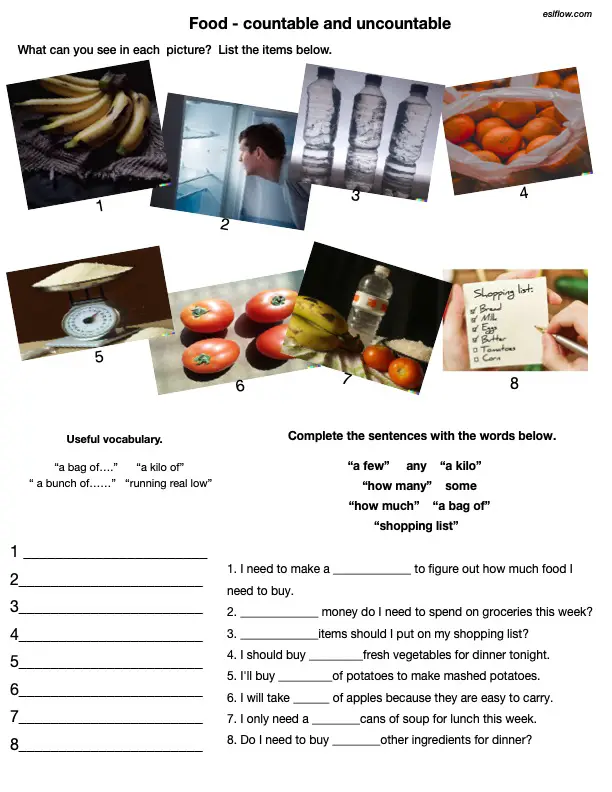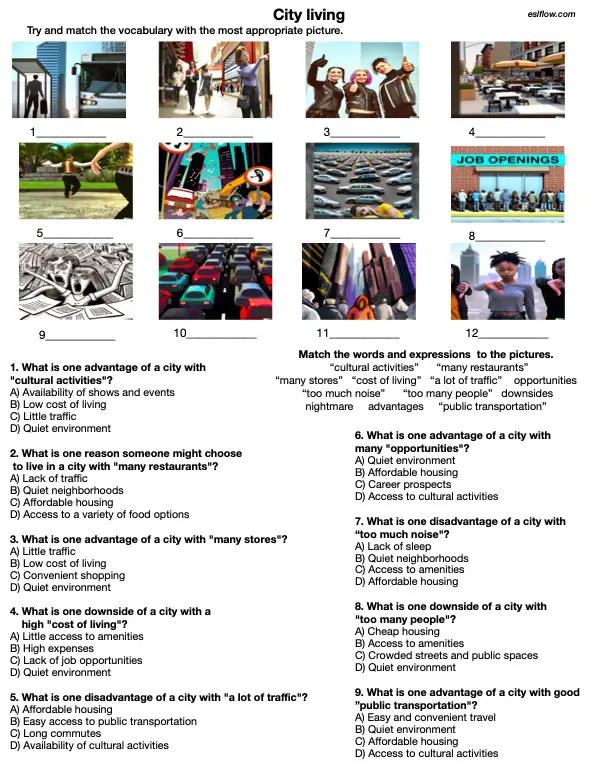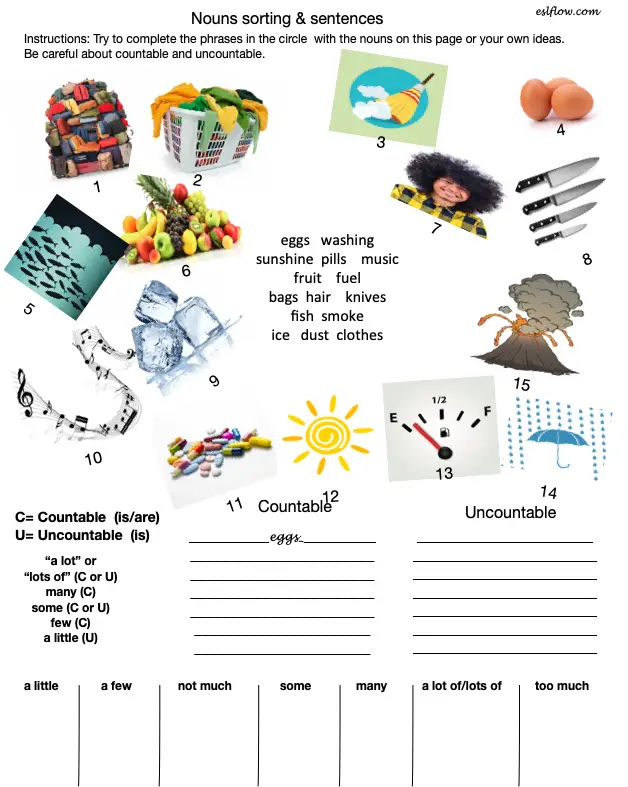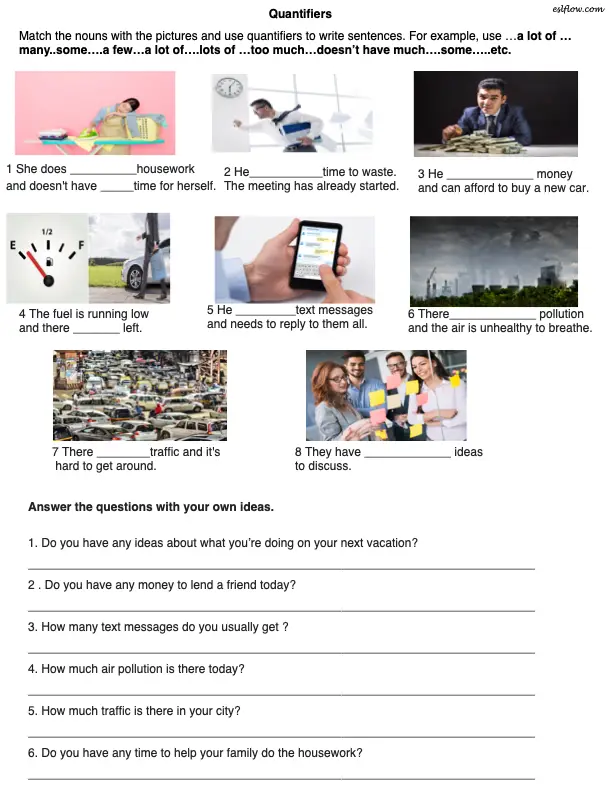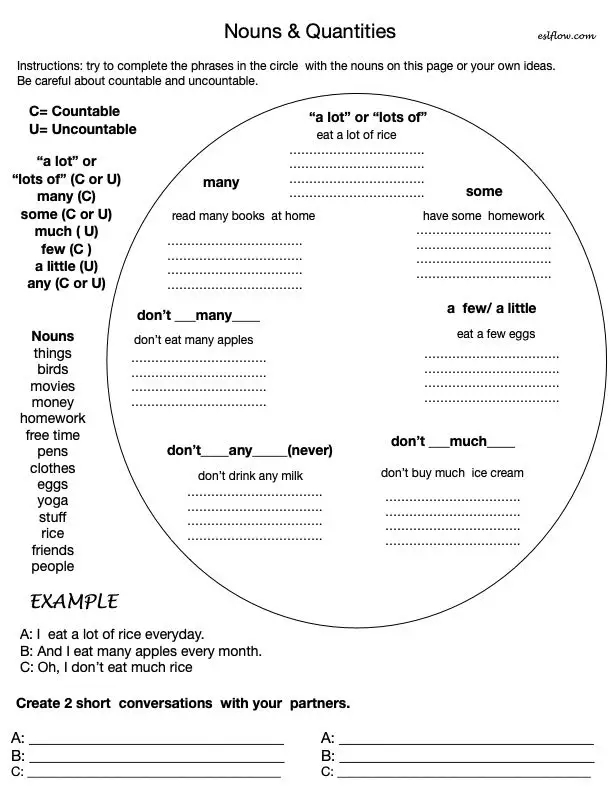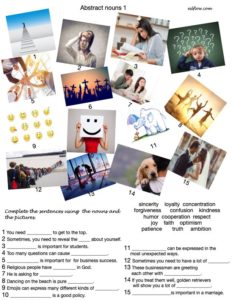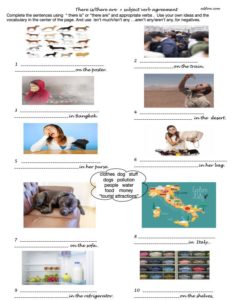Aspects of Nouns
Nouns are words that represent people, places, things, or ideas. There are several types of nouns, including proper nouns, common nouns, concrete nouns, and abstract nouns. Additionally, there are collective nouns, countable and uncountable nouns, compound nouns, and possessive nouns. The exercises below use pictures, matching exercises, sentence gap fills, as well as listening and speaking exercises to teach nouns. The aim is to use a variety of exercises and engage multiple intelligences.
1 Elementary countable and uncountable nouns (food)
Knowing countable and uncountable nouns is important for students because: it helps them understand the difference between singular and plural nouns; it helps them in everyday language; and it helps them understand when to use articles like ‘a’, ‘an’, and ‘the’.
Subscribe to Eslflow
Subscribe to get full access to the latest and best resources from eslflow.com. There are no ads in the newsletter and you will receive entertaining, high quality, and up-to-date teaching resources regularly. And, if you subscribe, you will be supporting the eslflow website.
2 Countable/uncountable nouns for cities (upper elementary)
Talking about the advantages and disadvantages of cities is a popular way for teaching more advanced countable nouns and uncountable nouns.
3 Countable and uncountable nouns sorting (with answers)
One of the most confusing thing for ESL students is distinguishing between countable and uncountable nouns. In the handout below students try to identify countable and uncountable nouns in the pictures and and list them in the appropriate columns. Then they choose 5 nouns and write 5 sentences.
Related Parts of Speech Resources
10 Adjectives Exercises Including Adjectives for People and Things
8 Preposition Exercises for Location, Time and Movement (PDF)
4 Quantifiers (with answers)
- Another aspect of using nouns is being to use quantifiers which describe the degree or quantity of a specific noun.
- Students look at each pictures and then write an appropriate sentence to describe how much or how little of each noun is being expressed by the picture.
5 Nouns Quantities/quantifiers
This is another exercise focusing on quantities and quantifiers.
6 Abstract Nouns (with answers)
- Abstract nouns are words that can represent concepts, states and conditions.
- Pictures and photos can often be used to help students visualize abstract nouns !
- In the exercise below students try to match the abstract nouns to the pictures and complete the sentences.
7 There is/there are (with answers)
Students complete the sentences with there is/there are and appropriate vocabulary to describe the pictures.
Related Resources:
6 Picture-Based Present Continuous Worksheets (PDF)
5 Useful Passive Tense Practice worksheets
6 Present Perfect Language and Speaking Worksheets
7 Incredibly Useful Past Tense Simple Teaching Activities (PDF)
3 Great Exercises for the Conditionals
